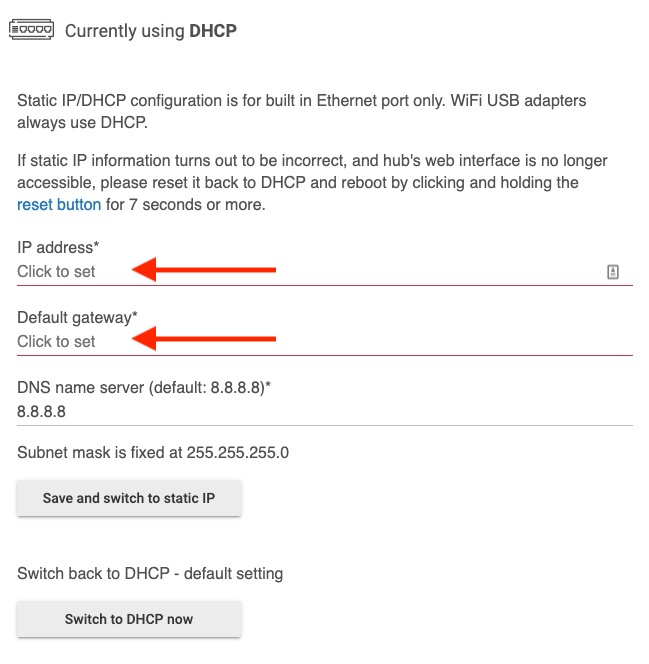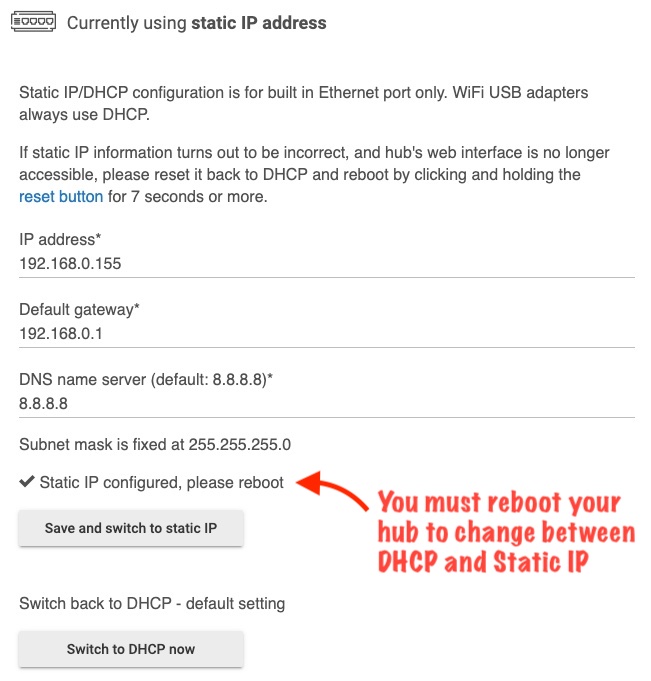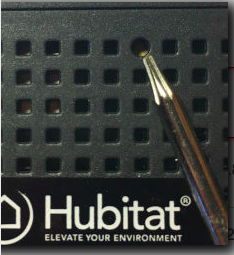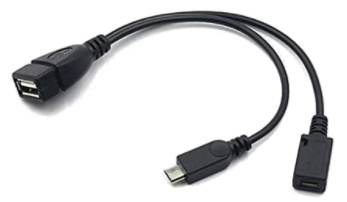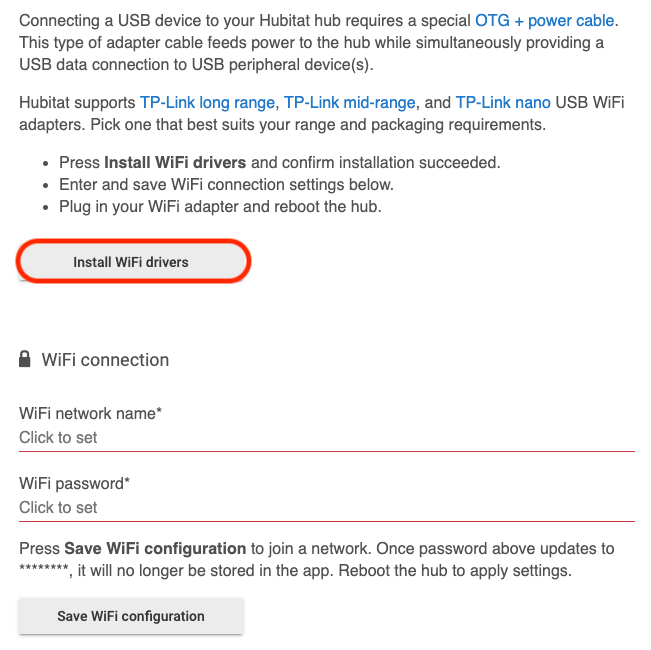Network Setup
The Networking settings allow you to switch between DHCP (Dynamic Host Configuration Protocol) for automatic setting of your hub IP address, or Static IP where you can define the IP address for your hub when connected by Ethernet cable. You can also add a compatible WiFi dongle to allow your hub to join a WiFi network without the need to attach an Ethernet cable.
NOTE:
- WiFi dongles are not included with Hubitat Elevation®. For maximum reliability, connect Hubitat Elevation® to your network with an Ethernet cable whenever possible.
- Static IP/DHCP configuration is for use with the built-in Ethernet port only. WiFi USB adapters will always use DHCP.
- Setting a Static IP address and configuring a WiFi USB adapter is not available for hubs prior to Model C-7.
Static IP/DHCP configuration
Static IP address
- Enter the desired non-routable IP address for your hub to use. The first three octets must match the other devices on your network, but the fourth octet can be any available number on your network. Use the Command shell tool on Windows (Type cmd into Windows search), or the Terminal app on MacOS (Located in the Applications > Utilities folder) to ping the IP address you wish to use, ensuring that there is no response from another device on your network before setting your hub to that IP address.
- Press Save and switch to static IP. Ensure the first three octets are the same for the IP address and Default gateway in accordance with your router IP address settings (i.e. 192.168.0.x).
- You must Reboot the Hub for the setting to take effect.
DCHP address
- To change back to DHCP and let the router assign an IP address to your hub via its MAC Address, press the Switch to DHCP now button and reboot the hub.
- NOTE: Any time you switch between Static IP and DHCP, you must reboot the hub or the setting will not take effect.
- If you are accidentally blocked from accessing your hub due to an incorrect or unknown IP address setting, turn the hub over and use the point of a pen to press the small button just beneath the surface of the hub casing.
WiFi Adapter setup
- Follow the instructions to add a compatible WiFi adapter to your hub. Connecting a USB device to your Hubitat hub requires a special OTG + power cable. This type of adapter cable feeds power to the hub while simultaneously providing a USB data connection for USB devices.
- Press the Install WiFI driver button and ensure the installation succeeded before continuing.
- Enter the network name (SSID) of the WiFi network you want your hub to join and then enter the WiFi password.
- Press the Save WiFi configuration button and reboot the hub.
- You must reboot the hub to activate your WiFi adapter and connect it to your WiFi network.work.
IMPORTANT !
- You must reboot the hub or the setting will not take effect.
- WiFi dongles are not included with Hubitat Elevation®. For maximum reliability, connect Hubitat Elevation® to your network with an Ethernet cable whenever possible.
- Static IP/DHCP configuration is for use with the built in Ethernet port only. WiFi USB adapters always use DHCP.
- WiFi USB adapter configuration is not available for hubs prior to Model C-7.
